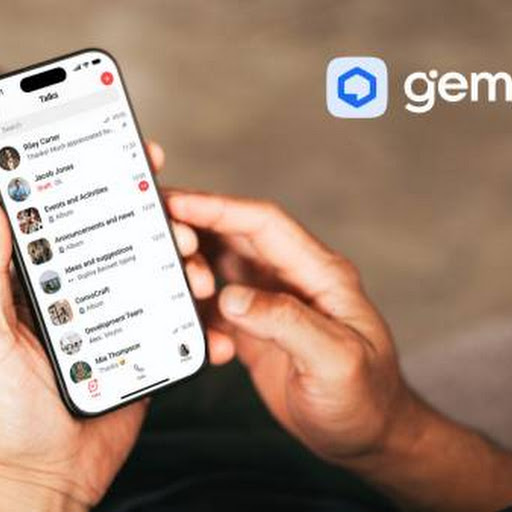In an era where the “digital office” stretches across countries, regulatory zones, and bandwidth realities, workplace chat has evolved from a nice‑to‑have into the backbone of organisational memory. Calendar invites come and go, but chat threads and file links become the living record of how decisions were made. Gem Team positions itself at the centre of that record, arguing that a corporate messenger must be as easy to adopt as consumer apps yet as defensible as a compliance vault.
This deep dive unpacks the platform’s architecture, feature depth, and user feedback, while drawing comparisons with incumbents that dominate the global collaboration market. The goal is simple: help you decide whether Gem Team deserves a place on your IT roadmap.
Definition & Origin
Gem Team is a secure enterprise messenger combined with a lightweight collaboration hub. While many chat services bolt encryption on top of a consumer‑grade stack, Gem Team’s founding mandate was to make compliance and control native—then work backward to design an interface that normal employees could love. The vendor behind the platform has been building B2B software for over half a decade, servicing banks, infrastructure operators and mid‑market tech firms. That enterprise heritage is visible everywhere: from mutual TLS handshakes at layer 7 to optional on‑prem deployments that satisfy even the strictest national data laws.
Business‑First DNA
Behind every button sits a policy switch. The development team admits they are not trying to reinvent the social chat wheel—they are packaging a feature set businesses already expect (threads, reactions, voice, video) but wiring it into a control plane that auditors can approve without lengthy workarounds. The result is a product that feels familiar to end‑users but produces the kind of audit trails, retention schedules and role mapping that compliance departments usually beg vendors to add after purchase.
Cloud or On‑Prem by Checkbox
There is no separate “enterprise edition” or pricey professional‑services engagement required to self‑host. Gem Team ships a deployment utility capable of spinning up a cluster on a private cloud, bare‑metal servers or a national operator’s infrastructure. For companies happy with SaaS, the vendor maintains EU‑based, US‑based and APAC clusters, each segregated by jurisdiction to satisfy data localisation regimes.
Ten Core Capabilities of Gem Team
Gem Team’s product map is intentionally compact. Instead of a long treadmill of half‑finished features, engineers chose ten pillars and iterated until each felt production‑ready.
-
Threaded Messaging at Speed – Messages arrive in under 250 ms on average, even on 4G links. Threads keep side discussions tidy so main channels remain readable.
-
300‑Seat Video Conferencing – Built on WebRTC with server‑switching that adapts to regional load. Screen share and session recording are included at no extra cost.
-
Secure File Transfer – Uploads are chunked, encrypted, and resumable. Retention periods can align with your corporate data policy in a few clicks.
-
Granular Role Permissions – Every action—posting, editing, inviting, exporting—maps to a permission that admins can assign to LDAP or IdP groups.
-
Multi‑Factor Login Policies – Enforce SMS Hardware Key for finance, while letting interns use TOTP codes. Flexibility reduces resistance during roll‑out.
-
Self‑Contained Mobile Apps – iOS and Android clients offer offline caching, low‑bandwidth fall‑back, and instant device wipe if stolen.
-
Org‑Level Channel Taxonomy – Departments, projects, and temporary task forces each receive distinct namespaces, preventing chat sprawl.
-
Broadcast & Announcement Feeds – High‑priority updates float above the chatter, ensuring HR or leadership posts reach every employee’s inbox.
-
Audit & eDiscovery Toolkit – Export logs in ISO 27001‑friendly formats; replay chat history for legal holds without third‑party plugins.
-
API & Webhook Gateway – While the app catalogue is still growing, a REST & WebSocket gateway lets engineers integrate bots, CRM alerts or custom dashboards.
Security Blueprint
Mutual TLS Everywhere
Unlike services that rely on standard TLS only for client‑to‑server hops, Gem Team requires two‑way certificate verification on all intra‑service calls. The upside: even if an attacker compromises one microservice, lateral movement is severely constrained.
End‑to‑End Encryption in DM Mode
Direct messages can be toggled to E2EE. Keys live on user devices; servers merely relay opaque payloads. This meets or exceeds GDPR Article 32 guidelines on state‑of‑the‑art protection.
Privilege Separation & Least Trust
Administrative consoles run on separate ports, with tokens that expire after 15 minutes of inactivity. Sensitive operations—deleting a channel history, rotating retention schedules—require a second confirmation by another admin, mirroring the “four‑eyes principle” used in banking.
Transparent Security Posture
The vendor publishes quarterly penetration‑test summaries and a live status page. Clients on the self‑host track receive signed vulnerability advisories within 24 hours of discovery.
Administration & Org Design
Managing thousands of users is easier when organisational charts and access policies live in the same place. Gem Team introduces Org Pages where HR can map departments, sub‑units, and dotted‑line reports. When a new employee joins, their role automatically provisions them into the right channels and applies the correct file quotas.
Profiles double as mini intranet pages, hosting contact details, time‑zone indicators and a rich‑text “About me” field—handy when cross‑border teams need context on a colleague’s expertise without switching tools.
Announcement Channels run on sticky logic: unread bulletins sit at the top of the chat sidebar until acknowledged, solving the classic “Important email lost in promotions folder” problem.
Implementation Journey
Rolling out an internal messenger can feel riskier than launching a customer‑facing app—internal backlash is reputationally expensive. Gem Team advocates a three‑phase plan:
-
Proof‑of‑Concept Sprint – Two weeks, one security‑sensitive department, focus on compliance sign‑off.
-
Wave Deployment – Add teams by geography or function every fortnight, capturing feedback in a shared tracker.
-
Legacy Sunset – Freeze old chat channels, redirect users with pinned messages, then archive and export data for regulatory storage.
During migration, a Data Mapper utility converts Slack exports, Teams channel structures, and email threads (EML format) into Gem Team JSON bundles, maintaining message IDs for future eDiscovery.
Training wise, most companies run one 60‑minute webinar supplemented by four micro‑videos covering: starting a call, uploading a file, using keyboard shortcuts, and searching message history.
Field Notes From Early Adopters
“Our infosec lead expected another six‑month audit cycle. With Gem Team it took three weeks because the platform passed every checklist out of the box.” — CIO, Scandinavian fintech.
“Up‑time has been 99.995% so far. We’ve spent more time discussing emojis than debugging outages, which is a win.” — Head of DevOps, APAC SaaS vendor.
Critiques cluster around integration breadth. Users love the REST gateway but want turnkey plugs for Jira, Salesforce and Tableau rather than building connectors themselves. Product leadership publicly committed to doubling the pre‑built integration count over the next two releases.
Competitive Landscape
| Feature Area | Gem Team | Slack | Microsoft Teams | Mattermost |
|---|---|---|---|---|
| Self‑Hosting | ✔️ Native | Via Enterprise Grid proxy | ❌ Cloud only | ✔️ Requires infra know‑how |
| E2EE DM | ✔️ Optional | 🔄 Limited (Enterprise EKM) | ❌ | 🔄 Community plugins |
| Max Video Seats | 300 | 50 (free) / 500 (paid) | 1,000 | Depends on self‑provision |
| License Price* | Mid‑range | High | Bundled with 365 | Low (open‑source) |
*Pricing ballpark based on public list rates Q2‑2025; enterprise discounts vary.
Who Benefits Most
-
Highly‑Regulated Sectors – Banks, insurers, state agencies: where auditability trumps social integrations.
-
Hybrid & Field Workforces – Mobile apps are first‑class citizens, not an afterthought.
-
Scale‑Ups Seeking Tool Consolidation – If your org juggles Slack, Zoom, Dropbox and Monday.com, Gem Team can replace at least half that stack.
Roadmap Signals
Public release notes hint at AI‑assisted meeting summaries, multi‑language live captions, and a Governance Dashboard that surfaces data‑residency heat maps across deployments. On the integration front, upcoming SAML 2.0 and SCIM endpoints should make automatic provisioning easier for Okta, JumpCloud and Microsoft Entra customers.
Final Verdict
Gem Team is not trying to be everything for everyone. Instead, it focuses on companies that need consumer‑grade usability plus unflinching control. Its integration catalogue is still catching up with the giants, but the security scaffold, deployment flexibility, and performance ceiling already meet mission‑critical standards. For organisations weighed down by licence sprawl, data‑sovereignty headaches or compliance drags, Gem Team offers a clean, credible exit ramp.
Try the 30‑day pilot. Run it against your strictest department. If the audit logs and user smiles match the marketing, you may just find your next long‑term communications backbone.











Artikel Terkait
Kebakaran Terra Drone: Misteri Pemetaan Sawit Ilegal & Bencana Sumatera Terungkap?
Visa Kartu Emas AS: $1 Juta untuk Izin Tinggal, Benarkah Adil? Analisis Kontroversi
BGN Tanggung Biaya Perawatan 21 Korban Kecelakaan Mobil MBG di SDN Kalibaru
Kecelakaan SDN 1 Kalibaru: 20 Siswa dan Guru Terluka Ditabrak Mobil Pengangkut MBG